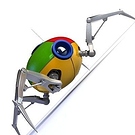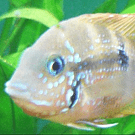I didn’t even notice we didn’t have IntVector3.
IntVector3


I would like this too


Can you describe where you would need it? Just want to understand the use case. Minecraft? Historically we have IntVector2 for handling pixel-sized 2D UI elements, screen resolutions etc.

I am implementing a voxel system. I have three sets of ints and it is working just fine. I am trying to match as much of the API to the terrain system. I can see having it might causing more confusion than it is worth.

Yep. A minecraft clone is exactly why I want it. Casting between types makes the source code harder to read and in cases when I am not passing this vector to the urho3d engine the casting is causing the code to run slower due to unneeded conversions.


The only real problem I see with it is that because the engine itself doesn’t have any use for it, it would be a largely untested class (except by client applications). On the other hand, I don’t like the idea of adding overloads to eg. Node::SetPosition(), as internally the scene graph uses floats.

It might be an overkill but wouldn’t templatization of the math library solve this issue ?

Templating to choose between float and double for example would make quite a lot of sense. Templating between float and int is somewhat ugly as you get operations like normalization that won’t work correctly with ints.